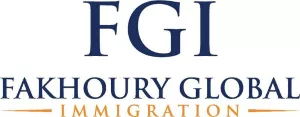- within Immigration topic(s)
- within Immigration topic(s)
U.S. employers may sponsor foreign nationals in either the Employment-Based, Third Preference (EB-3) category or Employment-Based, Second Preference (EB-2) category, through what is known as Schedule A, Group II – a streamlined pathway that grants a labor‑certification exemption for certain foreign nationals of exceptional ability in the sciences or arts, including the academic and performing arts fields. U.S. employers may submit an uncertified Application for Permanent Employment Certification (ETA Form 9089) directly to the U.S. Citizenship and Immigration Services (USCIS), along with an Immigrant Petition for Alien Worker (Form I‑140) and bypass the U.S. Department of Labor's (DOL) PERM labor certification process. This can save time and money since the U.S. employer would not have to incur advertising costs or pay money to an attorney to prepare an extensive PERM audit file. The eligibility requirements under Schedule A, Group II require the beneficiary demonstrate widespread acclaim and international recognition as assessed by experts in the field, and that both their recent work and the proposed U.S.-based role necessitate exceptional ability, supported by evidence from at least two of seven regulatory categories. This memorandum will examine the requirements that need to be met in order to qualify under the Schedule A, Group II program, and provide information on USCIS's 2024 policy changes with respect to the Schedule A, Group II program.
What is Schedule A, Group II?
As indicated above, the Schedule A, Group II program avoids the need to complete the PERM labor certification process that most foreign nationals are typically required to undergo in order to receive a U.S. Green Card. The DOL has identified certain occupations that have a shortage of qualified U.S. workers. Schedule A is the DOL's list of what those shortage occupations are in the U.S. Schedule A has two groups. Group I consists of registered nurses and physical therapists. Group II consists of foreign nationals of exceptional ability in the sciences or arts (including college or university teachers of exceptional ability) or the performing arts. Both Schedule A Group I and Group II allow U.S. employers to file a Form I-140 with an uncertified ETA Form 9089 directly with the USCIS, bypassing the PERM labor‑market test. Note: A self‑petition is not allowed under either Schedule A Group I or Group II.
What are the requirements for Schedule A, Group II?
There are requirements that both U.S. employers and foreign nationals must meet to qualify under Schedule A, Group II. U.S. employers must be willing to offer the foreign national a full-time permanent position. A U.S. employer must obtain a Prevailing Wage Determination (PWD) from the DOL and must post notice of the job opportunity at the work location for ten (10) consecutive business days. This notice must be posted between 30 and 180 days before the submission of the Form I-140 petition to USCIS. (Note: If the offered position is covered by a collective bargaining agreement, the U.S. employer must give notice to the collective bargaining representative.)
The foreign national must meet the exceptional ability alien criteria for Schedule A, Group II. In order to qualify for Schedule A, Group II, evidence must be provided that shows the foreign national has "widespread acclaim and international recognition" by recognized experts in the field. In order to establish this, there must be evidence that shows the foreign national's work over the past year required exceptional ability and that the intended future work in the U.S. will also require exceptional ability. In addition, evidence must be provided that shows the foreign national has evidence that meets two (2) of the following seven (7) criteria:
- Internationally recognized prizes or awards.
- Membership in international associations requiring outstanding achievement.
- Published material about the individual's work (with title, date, author).
- Participation as a judge or panelist in the field.
- Original scientific or scholarly contributions of major significance.
- Authorship of published scientific or scholarly articles in journals with international circulation.
- Display of the individual's work at artistic exhibitions in more than one country
Note: For performing arts, the criteria also include critical reviews or articles, earnings evidence, playbills or star billings, and/or documentation of renowned venues or organizations where the individual has performed in a leading capacity.
Please note that meeting the requirements for Schedule A, Group II designation is separate from the adjudication of the EB-2 or EB-3 Form I-140 petition. Eligibility for Schedule A, Group II does not guarantee approval of the Form I-140 petition itself, which is adjudicated under other sections of the regulations, depending on whether the petition is an EB-2 or EB-3 petition. Meeting the requirements for Schedule A, Group II only means that the Form I-140 petition met the permanent labor certification requirement.
What is the difference between DOL's Schedule A, Group II exceptional ability alien standard and USCIS's EB-2 exceptional ability alien standard?
There is an EB-2 Advance Degreed Professional or Alien of Exceptional Ability preference sub-category. The standard to qualify as an Alien of Exceptional Ability under this EB-2 preference sub-category is different from the EB-3 or EB-2 Schedule A, Group II exceptional ability sub-category. USCIS specifically instructs officers in its USCIS Policy Manual not to confuse the requirements to designate a beneficiary under the EB-2 Schedule A, Group II sub-category (as it relates to exceptional ability) with the requirements to classify a foreign national under the EB-2 Advance Degreed Professional or Alien of Exceptional Ability sub-category for immigrants of exceptional ability in the sciences, arts and business. While both DOL and USCIS regulations refer to aliens as having "exceptional ability" there are separate regulations that define the term "exceptional ability" differently under each sub-category. As indicated above, DOL defines the term "exceptional ability" as "widespread acclaim and international recognition accorded the alien by recognized experts in the alien's field." USCIS defines exceptional ability for purposes of the EB-2 category as "a degree of expertise significantly above that ordinarily encountered in the sciences, arts or business." See Chapter 8, Section 204.5(k)(2) of the Code of Federal Regulations (CFR) for the USCIS definition of the term "exceptional ability" as it relates to the EB-2 Advance Degree Professional or Alien of Exceptional Ability sub-category.
What are some challenging areas with respect to Schedule A, Group II?
There are few challenges with respect to pursuing Schedule A, Group II, which are the following:
- High Evidentiary Threshold: It is difficult to demonstrate "widespread acclaim" and international recognition. Some have viewed this high evidentiary threshold as close to that of the evidentiary threshold for the EB-1(A) Alien of Extraordinary Ability category. In fact, the USCIS Policy Manual notes the similarity between the EB-1(A) Alien of Extraordinary Ability category and the Schedule A, Group II evidentiary threshold, but also points out that USCIS examiners should understand that the evidentiary standard for Schedule A, Group II is indeed different.
- Administrative Burden: U.S. employers bear many procedural steps with respect to Schedule A, Group II. For instance, U.S. employers must obtain a PWD, which can take six months for the DOL to process, and post notice of the job opportunity for ten (10) consecutive days before being able to file the Form I-140 petition.
- Underutilization: Due to the complexity of the Schedule A, Group II category and the fact USCIS examiners have discretion, which results in the subjective adjudication of Form I-140 Schedule A, Group II petitions, this category, traditionally, has been used infrequently by employers.
- No Self‑Petition Option: Unlike EB‑1(A) Extraordinary Ability Alien category or the EB-2 Advanced Degreed Professional or Alien of Exceptional Ability Seeking a National Intertest Waiver (NIW) sub-category (EB-2 NIW), Schedule A, Group II does not allow the foreign nationals to self-petition. Given the high evidentiary threshold for Schedule A, Group II, and the fact foreign nationals may self-petition in the EB-2 NIW category, the EB-2 NIW category has seemed more attractive to foreign nationals and employers.
Have there been any recent USCIS policy changes regarding Schedule A, Group II in the last year or two?
Yes. In April 2024, USCIS revised its definition of the term(s) "science or art" for Schedule A, Group II to align with DOL's definition. This change in policy and/or USCIS' definition of "science and art" resulted in Schedule A, Group II to be applicable to any field of knowledge or skill in which colleges and universities offer degree programs. This resulted in more foreign nationals to possibly qualify for Schedule A, Group II, who previously would not have been able to qualify. Note: The change in USCIS policy only applies to Form I-140 petitions that were pending or filed on or after April 10, 2024. Note: While the USCIS has revised its definition of "science or art" to be more inclusive and include other fields than the past, the DOL's standard for exceptional ability (i.e., widespread acclaim or international recognition) has not changed.
Conclusion
Schedule A, Group II may offer a faster avenue to a U.S. Green Card, than pursuing a U.S. Green Card through the PERM labor certification process. In addition, there may be cost savings for U.S. employers. However, Schedule A, Group II's utility has been often limited by its complex requirements and/or the high evidentiary standard applied by USCIS examiners during the adjudication of the Form I-140 petition. With that said, there may be some foreign nationals who do not qualify for the EB-2 NIW category and/or may benefit from the Schedule A, Group II category. U.S. employers would want to consider this category as an option when evaluating whether to sponsor a foreign national for a U.S. Green Card.
The content of this article is intended to provide a general guide to the subject matter. Specialist advice should be sought about your specific circumstances.



